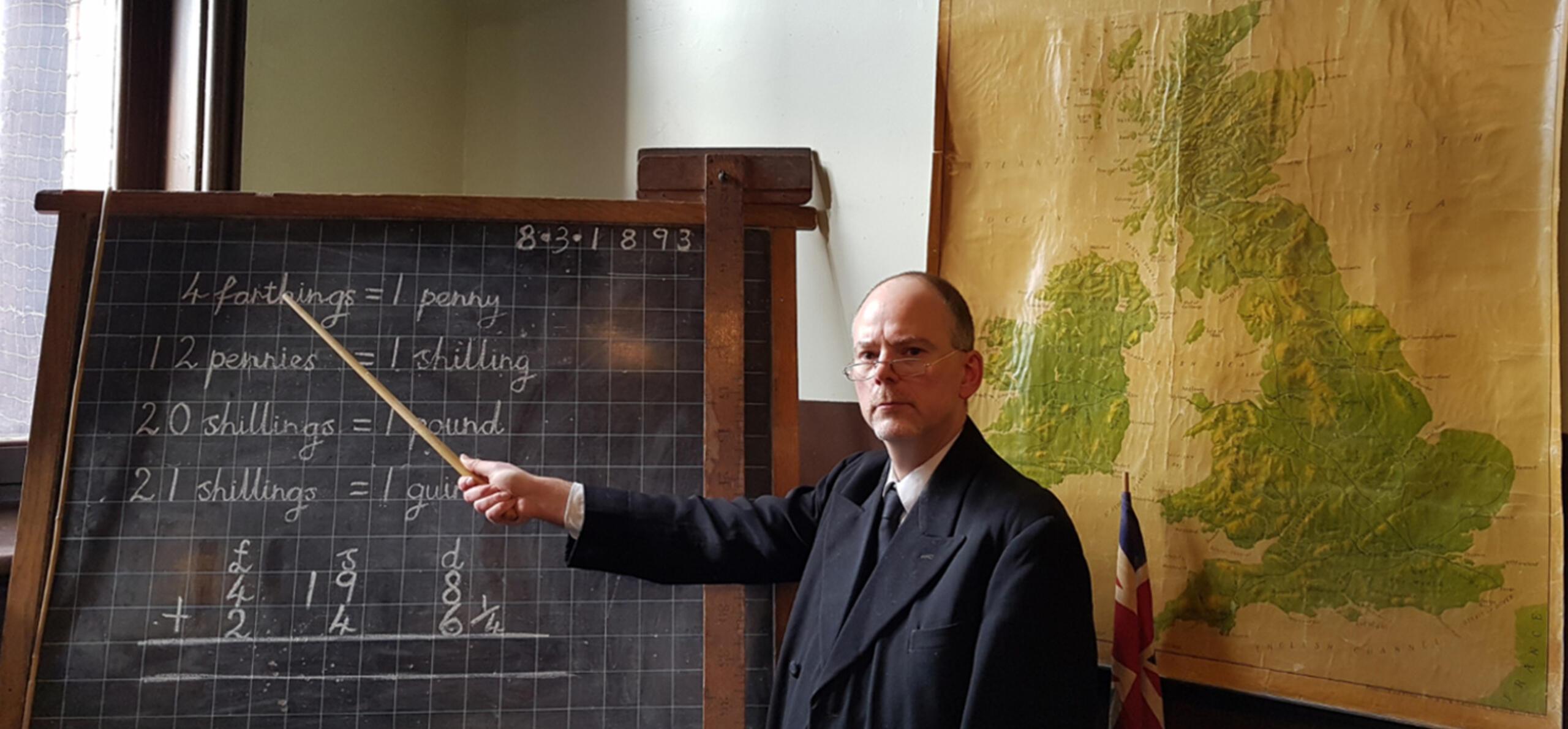'Good morning scholars'.
It is 1893 and the school welcomes its enthusiastic pupils. Light spreads through the high-arched windows and splashes across the heavy oak desks as students file into class. Some are thrilled with their new school dress while others find the waistcoats, hats and pinafores strange. The classroom is uncluttered. Only essential teaching tools are present. A picture of Queen Victoria stares majestically down upon the class. Today, they will learn all they will need for an honest and productive future...
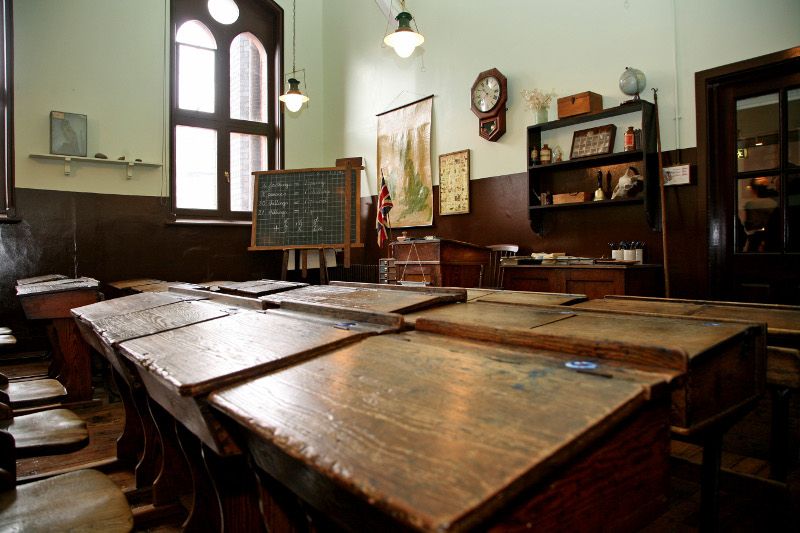
This is the immersive and fun experience of the past the Victorian schoolroom sessions at Reading Museum offer to children. School pupils step back in time to a world very different from their own but just as real and fresh.
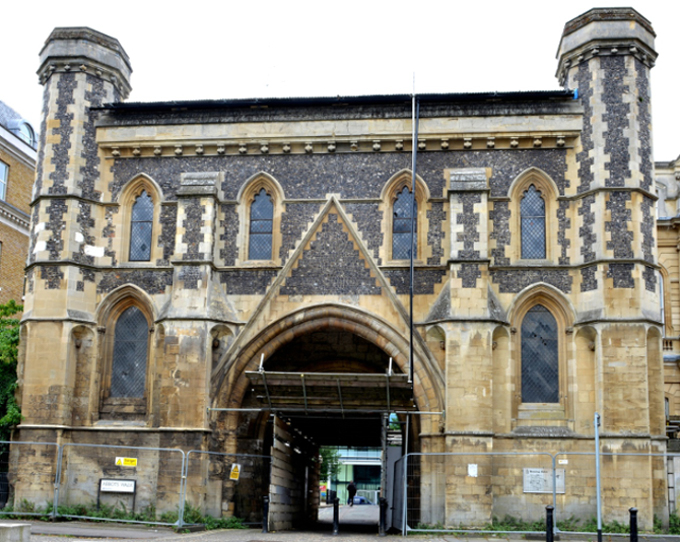
Abbey Gateway prior 2017-18 renovation
From September 2018 this true-to-life experience will take place in the Abbey Gateway, a medieval listed building with a fascinating history of its own. It started as an impressive grey-white stone entrance to the private buildings of the medieval abbey to later become part of the royal palace that welcomed, among others, Elizabeth I. In Georgian times the celebrated author Jane Austen attended Reading Ladies Boarding School there, along with several other future female writers of the time. Since then the building has been a private residence, a burned down ruin and a restoration project but always a landmark of our town.
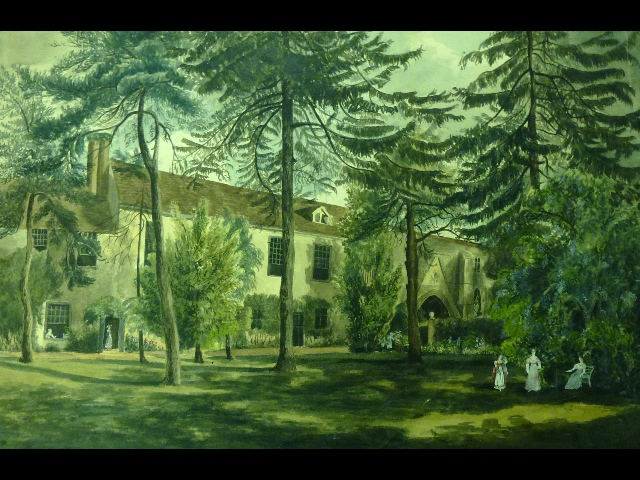
Jane Austen's Boarding School
The Victorian Schoolroom has been a popular addition to Reading Museum since 2007. Its history goes much further back to Katesgrove school. The first sessions were created in the space and with the desks and furnishings of the real Victorian Katesgrove school that had welcomed Reading children since the 1870s. The move to the Abbey Gateway will continue this tradition adding the evocative backdrop of this beautiful building.
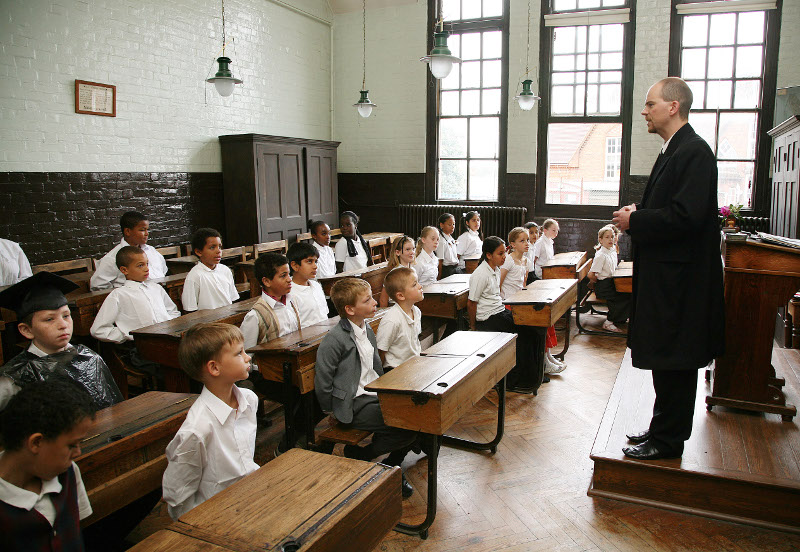
Katesgrove's Schoolroom
As in all the school sessions we offer at Reading Museum, the Victorian Schoolroom gives Key Stage 1, 2 and 3 pupils an exciting taste of the past. They have a chance to dress in the strange clothes their Victorian counterparts used to wear and to even take an old-fashioned name like Nathaniel or Lavinia. They can use original objects from over a hundred years ago and experience a taste of the strict Victorian teachers with a costumed session leader playing the stern master or mistress.
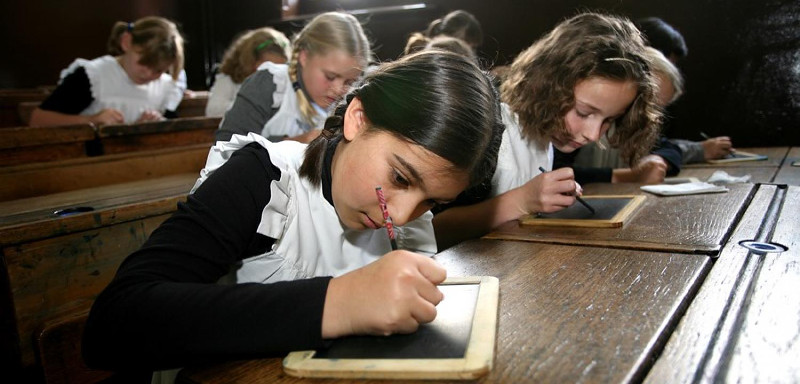
No phones or computers are allowed beyond the doors of the schoolroom, and not even modern electrical plugs are in view. Pupils can imagine a world without technology for a couple of hours by using unfamiliar dipping pens and ink wells and slates that bring the old world to life.
The history of the development of our modern school system is as complex as it is interesting. By 1893, when our schoolroom is set, school had become both free and compulsory for children up to twelve years old. The growth of towns and the booming business of firms like Huntley and Palmers meant that skilled workers were needed across the country. Over sixty thousand people lived in Reading.
The increasing need for literacy meant that teachers and students were pressured into achieving results at the expense of real learning. Children often helped their families at work and were literally pushed into school. This was one of the reasons for the strict discipline of Victorian schools. Victorian teachers famously used harsh physical punishment and a constant stream of moral poems, songs, stories and plays to correct the “outrageous behaviour” of the children.
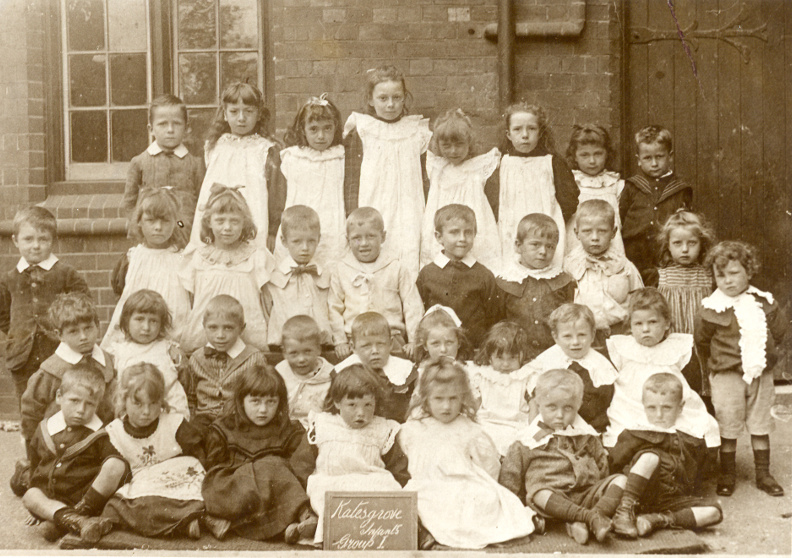
Archive photo - Victorian Katesgrove Schoolchildren
It isn’t easy for children of our time to imagine a reality so far from their own and reading about facts and dates doesn’t always help. However, as they take their seats in the Victorian Classroom and look at the stern figure of the costumed teacher in front of them, they really get it. They can get in the skin of the Victorian school children. The division of boys and girls at the two sides of the room; the repetitive “present please sir” reply to the teacher’s register call; the learning by heart and emphatic repetition of poems and sayings. This all starts to make sense and leaves an unforgettable impression in the pupils’ minds.
The Victorian classroom is not just a fun experience for budding historians and actors among the school visitors. It is an immersive way to learn about the past, bringing to life a period far removed from the modern world. Children are able to fully understand what school life was like, what was learned and how children were expected to behave. It becomes an alive and exciting way to teach children about how their ancestors would have been schooled. To peer around the door of a Victorian schoolroom is to encounter another world.
